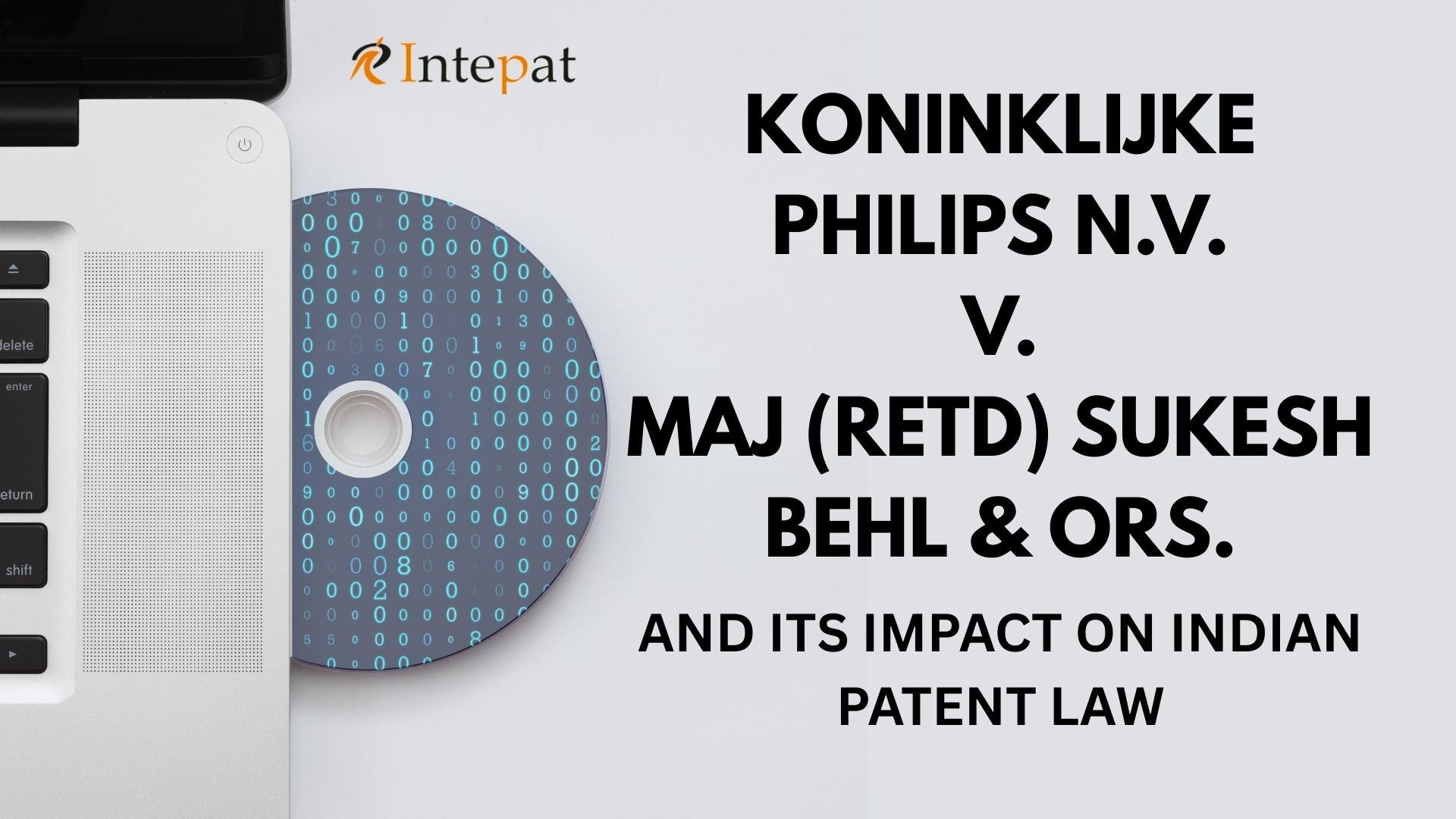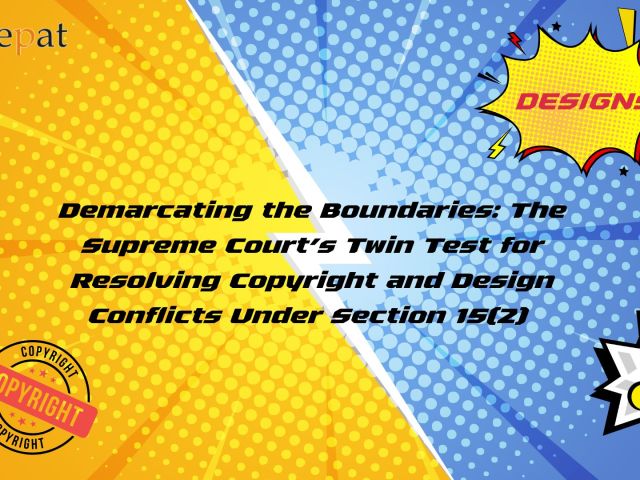INTRODUCTION
The Hon’ble Delhi High Court’s recent judgment in Koninklijke Philips N.V. v. Maj (Retd) Sukesh Behl & Ors., delivered on February 20, 2025, represents a significant development in Indian patent law, particularly concerning the enforcement of Standard Essential Patents (SEPs), grounds for patent revocation, assessment of patent validity, and the nuances of infringement. This prolonged legal dispute with three inter-connected suits, was centred on Koninklijke Philips N.V.’s Indian Patent No. 218255, pertaining to the EFM+ modulation technique integral to DVD technology. This analysis examines the key aspects of this ruling and its implications for stakeholders within the Indian patent ecosystem, with specific reference to the Patents Act, 1970.
1.ENFORCEABILITY OF STANDARD ESSENTIAL PATENTS (SEPs)
A central aspect of this decision is its implicit recognition of the enforceability of SEPs in India. While the judgment does not explicitly classify the patent as an SEP, its analysis of infringement within the context of DVD replication inherently acknowledges its essentiality to the DVD standard established by the DVD Forum. The court’s scrutiny of the defendants’ activities for infringement of Philips’ patented method underscores that patents essential to industry standards are subject to enforcement under Indian law.
2. IMPLICATIONS FOR FRAND TERMS IN LICENSING
This implicitly reinforces the significance of Fair, Reasonable, and Non-Discriminatory (FRAND) terms typically associated with SEP licensing. Although the judgment does not delve deeply into the intricacies of FRAND licensing, the court noted the defendants’ failure to engage in licensing discussions with Philips as a factor weighing against their claims of anti-competitive behaviour. This subtly emphasizes the expectation that entities utilizing standardized technologies covered by SEPs should be amenable to negotiating licenses on FRAND terms, a principle of growing importance in global patent jurisprudence.
3. CLARITY ON PATENT RECOVATION IN THE CONTEXT OF SEC. 8 OF THE PATENTS ACT, 1970
The case also provides valuable clarification regarding the grounds for patent revocation, specifically concerning Section 8 of the Patents Act, 1970, regarding disclosure of information regarding foreign patent applications. The defendants sought revocation under Section 64(1)(m), alleging non-compliance with the disclosure requirements of corresponding foreign patent applications. They contended that Philips had failed to provide complete information to the Indian Patent Office.
However, the Hon’ble Delhi High Court, aligning with established legal precedent, held that mere non-disclosure of foreign patent applications is insufficient for revocation. The court emphasized the necessity of establishing fraudulent intent. In the present case, the court concluded that the omissions by Philips appeared inadvertent, and the defendants failed to demonstrate any deliberate suppression of material information that would have impacted the grant of the Indian patent, particularly given the validation of corresponding patents abroad.This ruling serves as a critical reminder that procedural lapses under Section 8, absent mala fide intention or a demonstrable impact on the patent’s grant, are unlikely to result in revocation, offering a degree of assurance to patent holders against opportunistic challenges based on procedural technicalities.
4. UPHOLDING VALIDITY OF PATENT: NOVELTY AND INVENTIVE STEP
Furthermore, the judgment meticulously addressed the defendants’ challenge to the patent’s validity based on a lack of novelty and inventive step, as stipulated under Section 64(1)(d) and (e) of the Patents Act. The defendants cited a prior patent granted to Sony as prior art. However, the court rejected this argument, finding that Philips’ patent, which introduced the EFM+ modulation, offered specific advancements beyond the 8-to-16-bit conversion disclosed in the Sony patent.
The court reiterated the well-established principle that for a patent to be invalidated for lack of novelty, the prior art must disclose each and every element of the claimed invention, arranged in the same manner and performing the same function. Mere similarities are insufficient. Similarly, regarding inventive step (Section 2(1)(ja)), the court found that the improvement offered by EFM+ was not obvious to a person skilled in the art at the time of the invention. This aspect of the judgment reinforces the rigorous standards applied by Indian courts when assessing the validity of patents against prior art challenges, safeguarding the rights of patentees who genuinely introduce novel and non-obvious inventions.
5. UNDERSTANDING PATENT INFRINGEMENT
The case also elucidates the concept of infringement under the Patents Act, particularly addressing potential indirect infringement. Philips argued that the defendants’ DVD replication activities infringed its patented method. The defendants attempted to deflect liability by asserting that they outsourced the replication process to Moser Baer, an authorized licensee. However, the court astutely navigated this argument, identifying inconsistencies in the defendants’ position.
The court held that regardless of the entity performing the patented process, the final product, the replicated DVDs, inherently utilized the patented method. This led the court to conclude that the defendants were indeed liable for infringement. This aspect of the judgment clarifies that liability for patent infringement can extend to parties whose end products embody the patented invention, even if they delegate certain manufacturing processes. It underscores the focus on whether the patented technology is ultimately used in the infringing product, irrespective of the specific division of labour in its creation, a particularly relevant consideration in contemporary complex manufacturing and supply chain scenarios.
6. CONDUCT OF PARTIES IN DETERMINING INFRINGEMENT
Finally, the Hon’ble Delhi High Court’s consideration of the parties’ conduct is noteworthy. The court took cognizance of the defendants’ initial failure to secure necessary licenses and their delaying tactics during the trial, particularly in providing information about their infringing activities. This conduct influenced the court’s decision regarding damages and costs. The court ultimately imposed damages and costs on the defendants and determined a retrospective royalty rate for the infringement. This highlights the principle that the behaviour of litigants during legal proceedings can significantly impact the remedies awarded by the court, serving as a reminder that transparency and good faith are expected from parties involved in patent disputes.
KEY IMPLICATIONS OF THE JUDGEMENT
- Reinforcement of SEP Enforceability: The judgment, even without explicitly declaring the patent an SEP, strongly reinforces that patents essential to industry standards are indeed enforceable in India. This provides a degree of certainty for SEP holders seeking to protect their rights. This is crucial in a landscape where standardization is increasingly prevalent.
- Nuances of FRAND Obligations: While not a deep dive into FRAND, the court’s observation regarding the defendants’ lack of engagement in licensing discussions details the expectation of FRAND compliance from implementers of standardized technologies. This could influence future FRAND-related disputes by highlighting the importance of good-faith negotiations.
- Burden of Proof for Revocation under Section 8: The clear reiteration that fraudulent intent is necessary for revocation under Section 8 provides a significant safeguard for patent holders. It discourages the use of procedural technicalities as primary grounds for revocation, promoting greater stability in patent rights.
- Affirmation of Stringent Standards for Patent Validity: The court’s rigorous assessment of novelty and inventive step, particularly when faced with prior art, reaffirms the high bar for challenging patent validity in India. This protects patentees who have genuinely introduced novel and non-obvious inventions.
- Broadening the Scope of Infringement Liability: The judgment’s stance on infringement, extending liability to parties whose end products utilize the patented invention even if manufacturing is outsourced, is particularly relevant in modern manufacturing ecosystems. It clarifies that the focus is on the use of the patented technology in the final product.
- Impact of Litigant Conduct: The consideration of the parties’ conducts in determining remedies serves as a reminder that ethical behaviour and transparency during litigation are important factors in the eyes of the court. This can influence how future patent disputes are litigated.
CONLUSION
In conclusion, the Hon’ble Delhi High Court’s judgment in Koninklijke Philips N.V. v. Maj (Retd) Sukesh Behl & Ors. is a multifaceted and consequential decision for Indian patent law. It reinforces the enforceability of SEPs, clarifies the interpretation of Section 8 concerning revocation, upholds stringent standards for assessing novelty and inventive step under Section 64, provides insights into indirect infringement, and underscores the importance of the parties’ conduct in determining remedies. This case will undoubtedly serve as a crucial reference point for patent litigation in India, offering valuable guidance to patent holders, potential infringers, and legal practitioners navigating the intricacies of the Indian patent regime. It also reaffirms the judiciary’s commitment to upholding the rights of patent holders while ensuring a balanced and fair application of the Patents Act, 1970.
Written by Varshika, Legal Intern at Intepat IP




